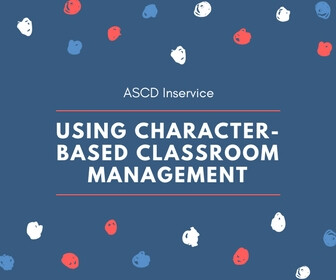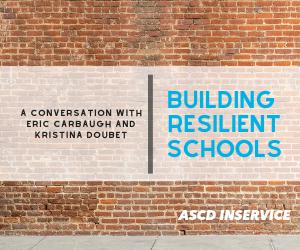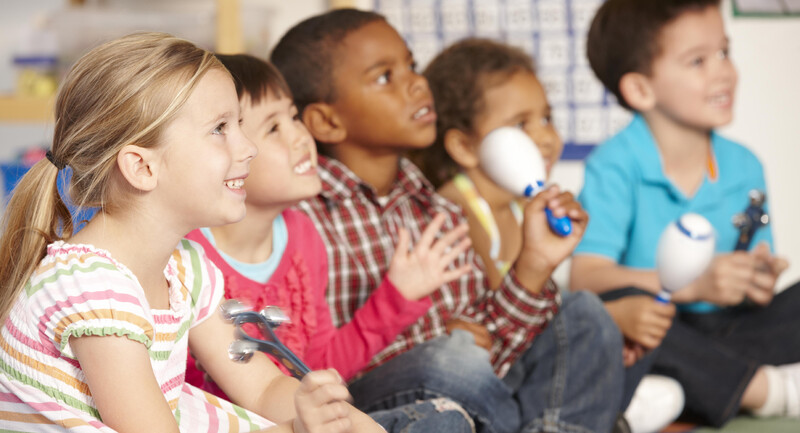Editor’s Note: This article is part of the Whole Child for the Whole World series. ASCD envisions a world in which all young people grow up with educational experiences that empower them to realize their full potential (whole child) as active contributors to our collective well-being (whole world). Together, we can change much – we can help each child reach their full potential and become global citizens who see themselves as guardians of the world they live in.
By Sean Slade
The more we unpack and dissect what constitutes good education and effective learning, the more we come to understand that everything is interconnected and has a role to play.
What does being interconnected mean, though? As a concept, it means that everything is connected, nothing is excluded, and everything is related. (OECD Future of Education and Skills 2030, Concept note: Knowledge for 2030, 2019)
Ecosystems
This is becoming truer for our communities, where a lack or even an abundance of any one factor can affect both current learning and eventual outcomes. This lack of that one thing can originate inside the school or from across the community, but, quite often, the results are seen across both settings.
A community that suffers from violence, for example, has more than just physical safety to deal with. An unsafe environment affects the student’s feeling of belonging, her sense of self, his ability to plan long term, her readiness to interact and socialize with others. From a psychological perspective, children living with trauma have greater difficulty with concentration, memory, recall, as well as the organization of information into useful knowledge. Children who have experienced multiple Adverse Childhood Experiences (ACE), such as having been verbally, physically, or sexually abused; seeing their mother treated violently; or having parents who abused drugs or alcohol, had a mental illness, or were incarcerated, are more likely to self-harm, abuse alcohol or drugs, suffer from depression, and attempt suicide (Goodwin, 2018).
All inputs affect outputs. All environments affect growth and learning. As education becomes more like an ecosystem – taking place both inside and outside the school, and into and across the community – the environment becomes ever more influential.
Intrapersonal
This notion of interconnectedness is also becoming apparent intrapersonally. Knowledge acquisition interplays with the development of skills and competencies, which in turn interplay with how we learn, and how we use our learning. Social and emotional well-being, whether it is related to empathy or self-worth, can affect the student’s ability to collaborate, communicate, co-construct learning, understand differing perspectives, and create new value. It can also affect the individual’s use and development of their cognitive skills (OECD, Social and Emotional Skills: Well-being, connectedness and success). Health, similarly, can affect ability, which can impact sense of worth, which can affect ability to socialize and collaborate, which can affect acquisition of needed knowledge and skills, which in turn can affect educational outcomes, the likelihood for economic prosperity, and, in addition, long-term health.
These examples are not linear nor are they ordained, but they illustrate the myriad of influences that affect learning and growth. Rather than any of these being seen as a continuum or path, we should understand that they are, instead, an ecosystem – a series of intrapersonal and interpersonal ecosystems – that weave together to create us and our learning communities. While we began with ‘health,’ we could have also begun with the effects of values or attitudes, skills, knowledge, or introduce the impact of student agency and learning opportunities.
We ourselves are ecosystemic and we learn also as part of a learning ecosystem.
How to respond
It’s a natural reaction to be overwhelmed. What can one teacher, principal, or parent, affect if there are a multitude of influences on our child’s development? But rather than feeling overwhelmed, we can also feel empowered.
We have the ability to control or influence parts of this ecosystem. As teachers, we have the ability to develop the climate and culture of our classrooms, to adjust how we teach, to accommodate different learning styles, and to acknowledge and adjust teaching to suit our students’ fluid moods, emotions, and motivations.
As principals, we allow the community to come into the school and for the school to interact with their surroundings. We are able to expand the notion and role of the school to that of a hub, where learning and guidance takes place and where the child’s learning environment is deliberately expanded.
As parents we help set the tone for education and learning, often being that conduit from school into the community and across an ever-broadening environment. We ensure that learning principles from the school are mirrored and that learning becomes established as a life-long endeavor.
This isn’t a call for education to “fix” everything. This isn’t a cry to load educators up with more responsibilities but, rather, it’s a call for us all to understand that we all play roles, have influence, and affect development.
We must appreciate this interconnectedness and seek to blend what has been siloed, and weave what makes us whole.
Sean Slade is an education leader, speaker, and author, with nearly three decades of experience in education in the U.S. and globally. He serves as Head of BTS Spark, North America, the social impact arm of BTS focusing on educational leadership development. Prior to BTS Spark, Sean was senior director of global outreach at ASCD, where he launched and grew the ASCD Whole Child Network across 56 countries and led the development of the Whole School, Whole Community, Whole Child Model (WSCC) with the CDC. His latest book is The Power of the Whole: What is Lost by Focusing on Individual Things.








